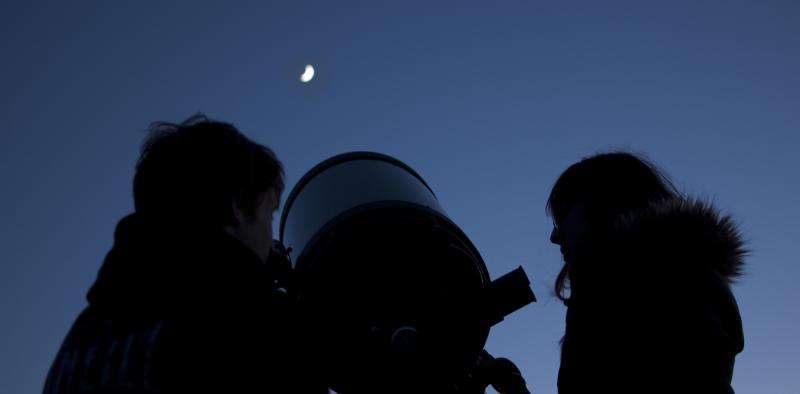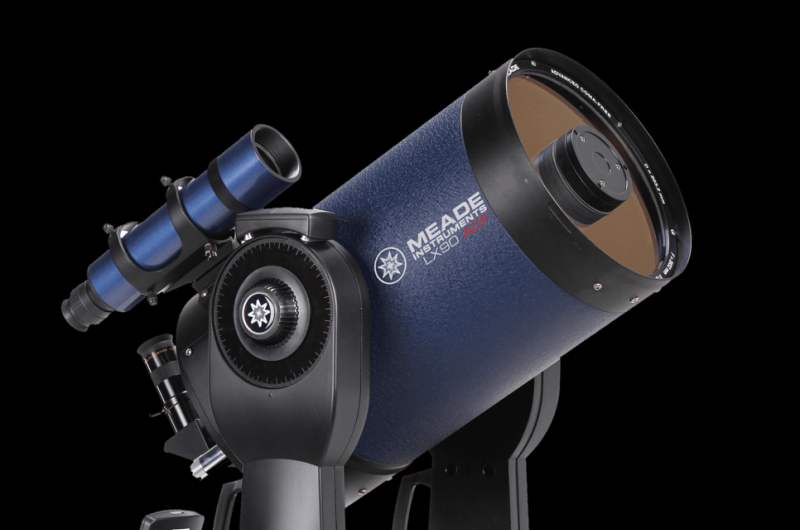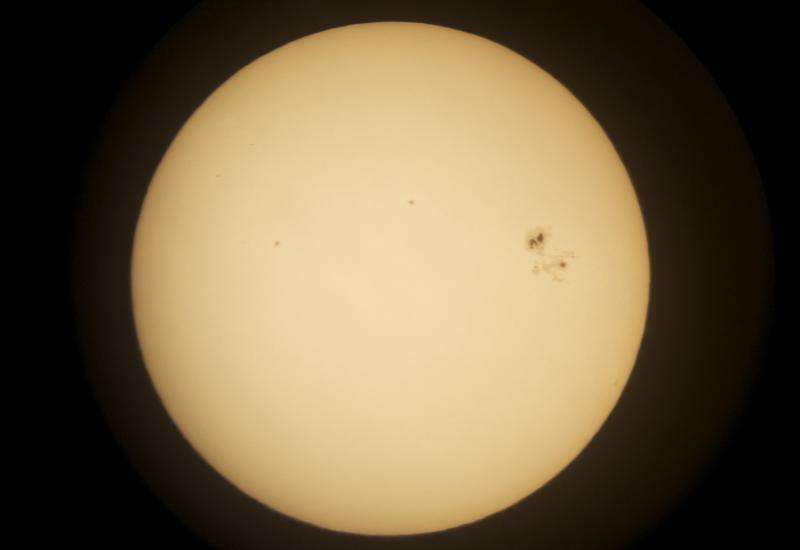What to look for when buying a telescope

I'm often asked what inspired me to become an astronomer, and I explain that a pivotal moment for me was stargazing through my grandfather's telescope.
I saw the moon's craters, Jupiter's moons, Saturn's rings and the crescent of Venus. Despite the telescope being rather small, I could see celestial objects with far greater clarity than Galileo did four centuries ago.
A telescope that can inspire doesn't need to cost as much as the Hubble Space Telescope. However, the quality of telescopes varies widely, so if you're thinking of buying one for yourself (or as a Christmas gift), there are a few key things to look out for.
Aperture
When astronomers talk about telescopes, they start with aperture. This is the size of the lens or mirror that focuses the light from distant objects. In a good telescope, it is the aperture size that fundamentally limits the image quality.
You can see more detail and see fainter celestial objects with progressively larger aperture telescopes. Viewing the cosmos with a 20 cm aperture telescope is a little like increasing the size of your eye's pupil to 20 cm, allowing you to see objects roughly 1,000 times fainter than what is possible with the unaided eye. That provides plenty of opportunity for inspiration.
Sometimes telescopes are advertised using magnification, but a large magnification on too small a telescope just produces a large blurry image. If you want a good view, think aperture, not magnification.
Mirrors or lenses?
Telescopes focus light with refracting lenses or reflecting mirrors. The smallest telescopes often use lenses, but mirrors are more affordable for larger telescopes. Which is the best option for you?
If you want to view terrestrial and celestial objects, then telescopes or binoculars using refracting lenses are probably the way to go. Most telescopes using mirrors aren't designed for viewing birds, sailing boats and landscapes. And if you have a limited budget, then binoculars could be a better option than a telescope.

If you are restricting yourself to the heavens, then a telescope with reflecting mirrors could be your best option. Unlike refracting lenses, reflecting mirrors don't suffer from chromatic aberration, where different colours are not brought to a common sharp focus. Furthermore, a 10 cm aperture telescope using mirrors is far more affordable than a 10 cm telescope using lenses.
There are several telescope designs for amateur astronomers that feature a "primary" reflecting mirror. Newtonian telescopes (yes, invented by that Newton) have a relatively simple and inexpensive design that places the eyepiece near the front of the telescope.
Schmidt-Cassegrain and Maksutov telescopes combine a reflecting primary mirror with a glass "corrector" plate to produce sharp images over the field-of-view. These telescopes have the focus behind the primary mirror, and are more compact than comparable Newtonian telescopes, but more expensive too.
Which way to look
If you are viewing celestial objects, you need a way to keep your telescope pointing in the right direction. If you have a pair of binoculars, you can use your hands, although mounting your binoculars on a tripod will enable better views.
Alt-Azimuth mounts are the mechanically simplest mounts, and include Dobsonian mounts where the telescope rests in a simple (often wooden) frame. A Dobsonian mount saves money that can be better spent on aperture.
When we observe the night sky, the objects appear to move because of the rotation of the Earth on its axis. Equatorial mounts are aligned with the Earth's axis, and a motor can be used to compensate for the Earth's rotation. However, aligning an equatorial mount with the Earth's axis isn't easy for the inexperienced.
Cheap equatorial mounts are a waste of time, as poorly manufactured and under-engineered gears will just frustrate (and aren't child friendly). However, if you have a bigger budget and want to take photos of faint celestial objects, then an equatorial mount is almost essential.
Computerised and GPS-assisted mounts are increasingly common. These allow you to easily find objects in the night sky and automatically compensate for the rotation of the Earth without the overheads of manually navigating the sky. They are incredibly helpful, but you are spending money on a mount instead of aperture.
Don't forget!
People purchasing telescopes often overlook eyepieces. The worst eyepieces have tiny pieces of glass to squint through and produce disappointing results. At a minimum, choose Plössl eyepieces, which are affordable and comfortable to look through.
You will need to navigate your way around the night sky, and even computerised telescopes often need bright alignment stars. Decades ago you needed a star atlas, but now there are free computer programs and cheap phone apps for celestial navigation.
If you want to take photos of celestial objects, there are a number of options available. You can take rudimentary photos of the moon and planets with your telescope and phone! For fainter celestial objects, you will need a digital camera and accurate tracking of the stars, which can get complicated.
Looking at the sun without a solar filter can do irreparable damage to your eyes and shatter glass lenses. Don't do it! If you want to look at the sun, buy a specially designed solar filter.

So where to buy? I would avoid department stores, and treat camera shops with caution. Specialist astronomy shops are often staffed by amateur astronomers who know the ins and outs of telescopes. Similarly, specialist telescope manufacturers tend to produce better equipment than other manufacturers.
Finally, you may want to try before you buy. Your local amateur astronomical society may have star gazing nights for the public, providing opportunity to learn about telescopes and dip your toe into the inspirational cosmos.
Source: The Conversation
This story is published courtesy of The Conversation (under Creative Commons-Attribution/No derivatives).
![]()




















